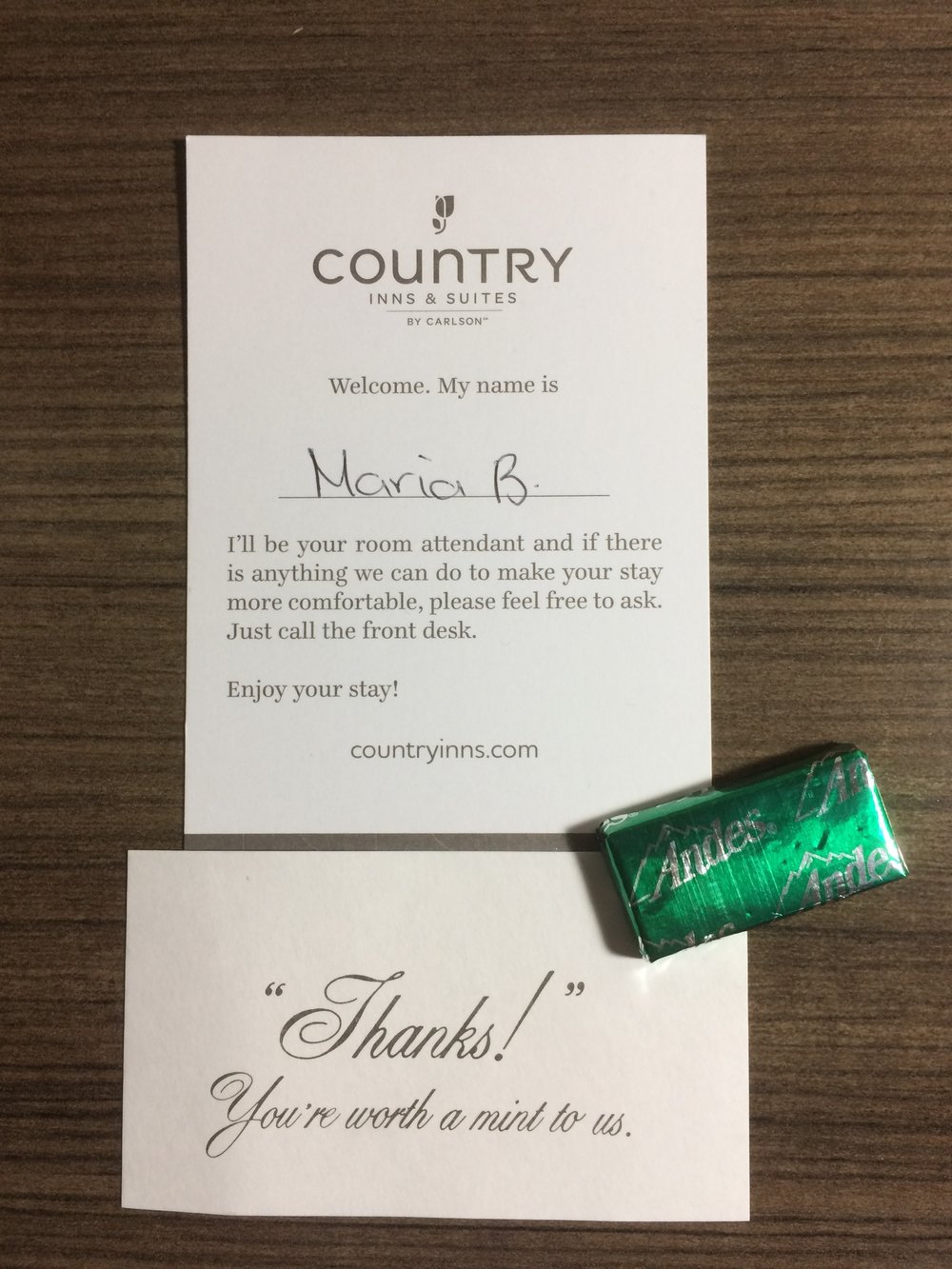I was recently in Watertown, South Dakota for a speaking engagement at the Watertown Convention and Visitors Bureau.
Whenever I deliver a keynote presentation, I like to prepare by talking to a few people I know will be in the audience. It helps me tailor the message to the group so it becomes more relevant.
This event focused on creating a service culture for the local tourism industry so I wanted to ask people how they wanted visitors to feel about the service they received.
Jeri Warne, was one of the people I spoke with. Jeri is the general manager of the Country Inn and Suites in Watertown. She told me she wanted people to feel welcome, the way you might make a friend feel if they were visiting you.
My experience staying at her hotel matched the vision. I received a warm and friendly greeting from Zack at the front desk. He already knew who I was, which was pretty amazing. Paul approached me and offered me a beer when I finished checking in. (The hotel hosts a guest reception on Tuesdays.)
Maria also made my stay a great one, though we never met. She’s the room attendant who made sure my room was clean and welcoming.
There’s a good chance your business has invisible service providers like Maria. Here’s how to make sure they’re serving your customers well.
This nice note card made Maria “visible” even though I never met her.
Who is an Invisible Service Provider?
An invisible service provider is someone the customer never sees or directly interacts with.
Their service often goes unnoticed if they do their job well. And when things do go wrong, it’s a customer-facing employee who will serve the upset customer.
Here’s a couple of examples:
The next time you fly, think about the baggage handler who made sure your luggage got to your destination. A cleaning crew made sure your plane was cleaned between flights. A caterer stocked the galleys with snacks and drinks.
When you eat out, a dish washer ensures the dishes are clean while a cook prepares a fabulous meal.
Or the next time you order something from Amazon, take a moment to wonder about the small army of people who magically make your package appear so quickly. (I toured an Amazon fulfillment center and it was fascinating.)
Now pause and identify any invisible service providers in your organization.
- They don’t directly interact with customers.
- Customers will notice whether or not they do their jobs.
- Someone else will serve the customer if things go wrong.
Why is their impact outsized?
Invisible service providers have an outsized impact for a few reasons.
First, people tend to really notice when something goes wrong. Let’s go back to the baggage handler example. If you’ve ever had a suitcase lost, delayed, or misrouted, you know how much of an epic hassle that can be!
Second, someone else has to handle the problem. Consider the employees who work in an airline’s baggage office. They spend their days serving customers who are upset about lost bags, even though they weren’t the person who caused the problem. Over time, too many problems can create resentment and erode team cohesion.
Third, leaders often discount the impact of invisible service providers because they aren’t customer-facing. These employees are often left out of customer service training. Their performance is often judged more by productivity than customer impact.
How can you help service providers become visible?
Elite organizations understand the impact invisible service providers can have on customers. Here are just a few examples of things you can do to get these employees to become more visible and customer-focused.
Start by identifying these employees in your organization.
Next, work on making them visible. I refer to them as invisible service providers to highlight the problem, but it’s not a very nice term. Try to find ways to connect these employees with customers.
Here are some examples:
- Restaurants put a video monitor in the kitchen so cooks can see customers. (Customer satisfaction increases dramatically in restaurants that do this!)
- Software companies have developers spend time answering support tickets.
- Fulfillment center workers read verbatim feedback from customer surveys.
- An airline had it’s baggage handlers and other “under the wing” workers attend customer service training alongside gate agents.
- Hotel room attendants leave note cards in guest rooms to introduce themselves.
Finally, make sure all employees understand how they serve customers. I recommend every employee be able to answer three questions about the customer service vision:
- What is it?
- What does it mean?
- How do I personally contribute?




